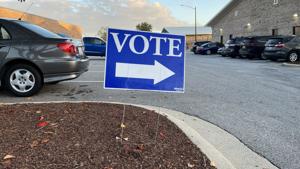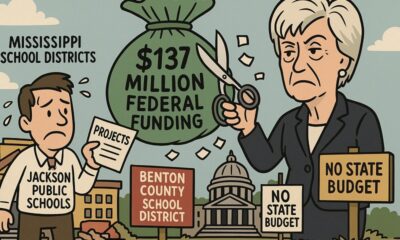(The Center Square) – How concerned are American voters about the situation at the border? Who do they blame the most for the fentanyl crisis gripping the country?
With former President Donald Trump, the GOP frontrunner in the race for the presidency in 2024, facing four separate indictments heading into primary season, what does that mean for his and other Republicans’ prospects when the first ballots are cast early next year?
These questions and more will be answered in the coming days and weeks in The Center Square Voters’ Voice Poll, announced Wednesday by the Franklin News Foundation and its flagship media property, The Center Square. The first results drop Thursday morning at TheCenterSquare.com.
The Center Square Voters’ Voice Poll, conducted by Noble Predictive Insights of Phoenix, improves upon the outdated practices in polling today by introducing an innovative approach to understanding the American electorate, according to Mike Noble, founder and CEO of Noble Predictive.
Traditional national polls, with their limited respondent count of around 1,000, fail to capture the intricate dynamics within political parties, Noble said. In its partnership with The Center Square, Noble’s team surveyed 2,500 registered voters – 1,000 Democrats, 1,000 Republicans, and 500 independents. This pioneering solution addresses the constraint of a modest sample size and provides precision in sub-group analysis, Noble said.
“The Center Square readers represent a politically diverse group of taxpayers interested in a wide breadth of issues impacting their local, state, and national governments. Understanding the true sentiments of registered voters is critically important to our readers because they want to hear all voices represented and begin an honest discussion about our country,” Franklin News Foundation President and The Center Square Publisher Chris Krug said. “The Center Square has established itself as one of the most trusted national media brands in the United States through its dedication to unbiased, straightforward coverage of local, state, and national news, and our new recurring polling initiative will provide the best, most relevant insights.
“To achieve this, we are thrilled to partner with Noble Predictive Insights, which has established a reputation for accuracy in the polling space.”
This national poll was conducted utilizing a hybrid methodology, combining online opt-in panel (70%) and text-to-online (30%) surveys. Executed by Noble Predictive Insights from July 31 to Aug. 3, the survey drew from a national registered voter sample. Demographics such as gender, region, age, ethnicity, and education were weighted to mirror recent national affiliation surveys.
The margin of error for the aggregate sample was ±2.4%, with each political group independently weighted.
“In a landscape where conventional national surveys trade depth for breadth, Noble Predictive Insights’ revolutionary polling method not only ensures accuracy and precision but also opens new avenues for insightful analysis of the diverse political fabric that shapes our nation,” Noble said.
Noble Predictive Insights is a nonpartisan public opinion polling, market research, and data analytics firm. Formerly O.H. Predictive Insights, Noble Predictive Insights is a 2023 Inc. 5000 fastest-growing company in the Southwest region, and is ranked in the top 15 most accurate pollsters as well as in the top five for lowest average bias in the 2021-22 election cycle by FiveThirtyEight.
For more detailed insights and information about methodology, please visit www.noblepredictiveinsights.com.


















































